As the new year draws closer, it’s time to start planning for a major advertising upheaval: the 2024 presidential election. While political ads may be the center of attention during campaign season, brands will also face their own challenges as political tensions mount.
2024 is shaping up to be an intense election year, with audiences more politically charged and divided than ever. Brands looking to appeal to new customers will face consumer volatility, brand safety risks, and rising media costs due to the influx of political ads.
With all this turmoil, planning will be key to 2024 success. So how can you start preparing now to put the right strategy in place?
Plan ahead for potential election-related challenges in 2024
The biggest question mark going into any election year is how it will impact consumer behavior, and we’re already seeing signs that 2024 will be particularly challenging. Many consumers feel that 2024 is likely to be a redo of the 2020 election, leading to apathy for some and stress for others. You’ll need to find the right message that speaks to your audience and stands out from the noise.
But that’s not the only thing to take into account. As political ads proliferate on many platforms, users show up in droves on social media to express their own opinions, and news cycles ramp up the potential drama, brand safety needs to be front of mind in your 2024 planning. Your ads can show up alongside ads, user-generated content, and news stories that could potentially offend or anger customers.
Make sure you have a thorough understanding of both the relevant policies and content moderation capabilities on different platforms, which can vary widely.
Pinterest, for example, allows no political advertising, while YouTube recently reversed the misinformation policy it put into place during the 2020 election. You also should explore what you can do if your ads are showing up in the wrong place, whether that’s in a TV spot or on X, formerly Twitter.
These are not new concerns for brands in an election year, but there are some fresh challenges that could play a role for the first time in 2024. Misinformation from deepfakes and AI-generated political ads is on the rise, although Meta and Google are now limiting the use of AI tools in political advertising.
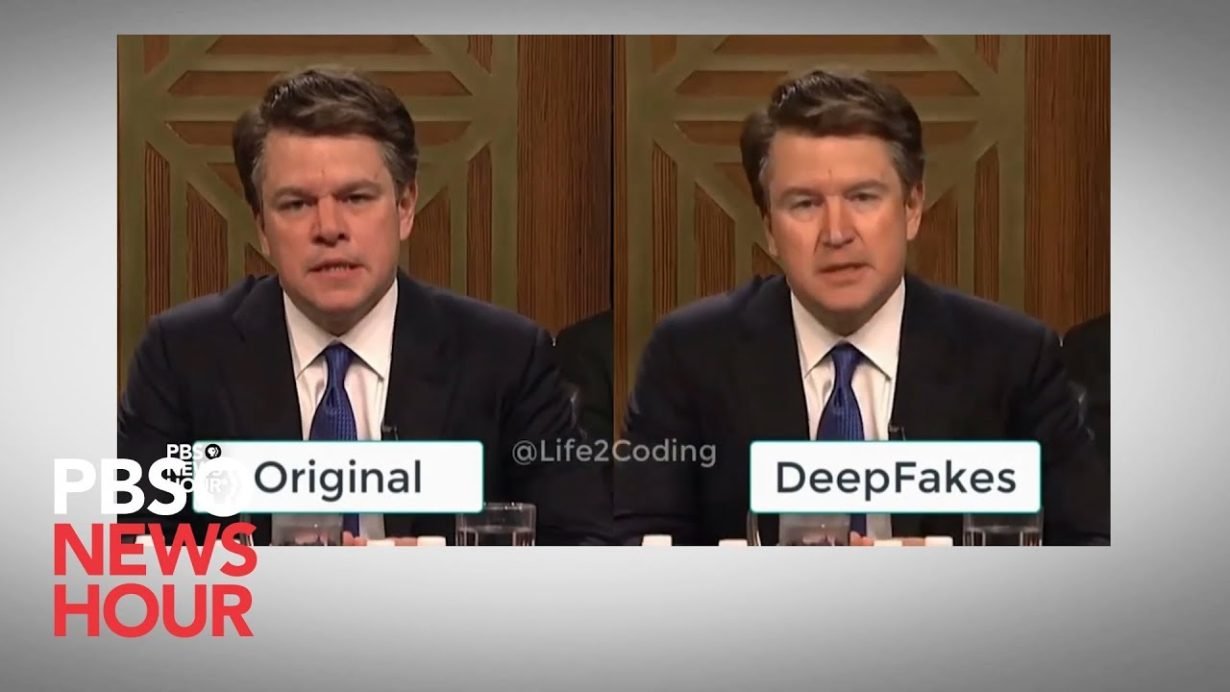
Source: PBS
To mitigate these risks, platforms will need to quarantine or limit some political advertising so consumers can still find moments of calm in the maelstrom (and brands can be insulated from poor alignment optics).
Understand your audience’s expectations around politics and social issues
A deep understanding of your audience is critical to formulating your brand’s approach. Will your target audiences seek out moments of calm and comfort leading up to November as anxiety builds? Will they expect your brand to make a clear stand on political issues or do they want you to stay out of the conversation?
Different segments may have different expectations, and you’ll need to dive deep into your audience’s preferences and formulate a plan that makes sense for both your brand and audience to chart the right path.
Remember: your brand can’t be everything to everyone. That’s a sure path to failure. Figure out the best course for your brand and your audiences and stick with it.
Demographics can give clues on where your customers will fall on the spectrum when it comes to consumer brands and politics. In general, younger consumers believe brands should take part in conversations about political topics and social issues, while older consumers aren’t as interested in hearing from brands on these topics. According to Edelman, 64% of Gen Zers aged 18-26 say that they buy from brands based on their beliefs. Gen Z wants brands to support the causes they care about most, like sustainability, mental health care, and racial and gender equality.
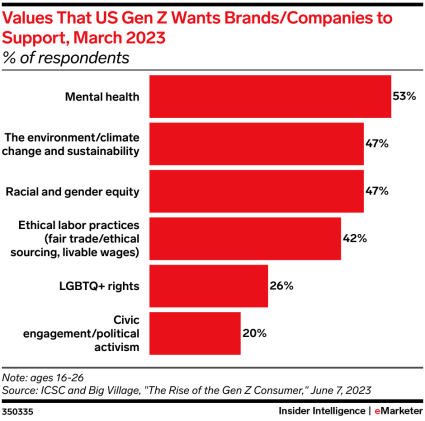
Source: eMarketer
But demographics aren’t enough. To get the more detailed insights you need, you should take a closer look at your customer personas to see where your audience is politically and demographically.
Make sure you’re taking both quantitative and qualitative audience data into account. A great way to do this is to share information and insights between brand teams, which tend to focus on broad personas, and performance teams, which usually leverage the quantitative data they can use for more precise targeting in campaigns. By combining these strategies, you can create a unified vision of your customers across the full funnel and determine what messaging they’ll respond to best.
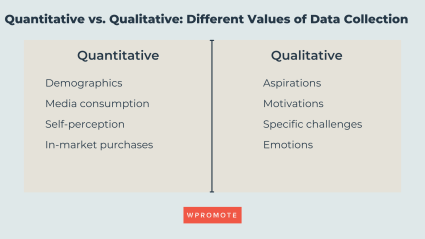
Find the right brand voice in election year ads
No matter what, your brand will need to tailor your messaging and strategy to meet the needs of both your customers and your business. Any messaging your brand creates in 2024, political or not, should match your brand’s voice and values.
If your brand is more outspoken and your audience will expect you to take a stand on political issues, your team needs to get ahead of the game on next year’s political conversation. Your “political strategy” should start in January and continue throughout the year. And that strategy can’t just be emphasizing the values your audience holds–it needs to be rooted in your brand’s ethos.
For example, Dove has made a point of incorporating social issues into their messaging for years, with ads focused on dismantling harmful beauty ideals and promoting confidence in women and girls through campaigns like the Dove Self-Esteem Project. The brand has more recently invested in supporting the CROWN Act, which aims to prohibit race-based hair discrimination, and Code My Crown, a guide for developing Black hair textures and styles in video games. This activism aligns with the brand’s mission to promote “real beauty” and creates a positive image for a progressive consumer base.
Taking a stand on issues that are important to your audience can help build trust and loyalty. That can pay dividends in the long term since consumers will keep coming back to brands that support their values and that they feel good about spending money on.
On the other hand, brands with less politically engaged customers may choose not to make statements about their values. If your company falls into this category, you’ll have to tread more carefully on the brand safety front and prioritize avoiding placement next to political advertisements or UGC that could imply alignment with a specific position.
Whichever route your brand chooses, remember that it’s possible you’ll lose some customers. An election year is a volatile time, so lean into creative and messaging (or the lack thereof) that reflects your brand’s voice and values. This could turn off some customers, but it’s also an opportunity to gain new ones who are aligned with your brand’s target audience.
Activate your election year marketing strategy
Once you’ve decided on the political (or not-so-political) strategy that suits your brand best, it’s time to put your election-year marketing plan into action.
First and foremost, you’ll need to choose the right platforms for your campaigns, which can be challenging in a politically charged time. In advance of 2024, evaluate each platform you’re on and those you’ve chosen not to invest in so far with an eye toward not just performance, but election year viability.
Take a look at each platform’s standpoint on political ads. Some, like LinkedIn, TikTok, and certain streaming services, are opting out of political advertising entirely. Pinterest has taken that further by not running ads against political and election-related search terms. Others, like Google and YouTube, allow political advertising to run with certain restrictions. No matter what policies they have today, it’s important to keep an eye out for potential changes, like when X (formerly Twitter) recently pivoted to allowing political ads after banning them in 2019.
You’ll also need to consider the price of media. Media costs will be in flux as political ad spend increases in 2024. Bloomberg is anticipating $10.2 billion in political ad spending next year, and costs are likely to ratchet up for brand advertisers looking to get a piece of that real estate. You’ll need to choose the right platforms and stay agile with your budgets to get the best bang for your buck as the election gets closer.
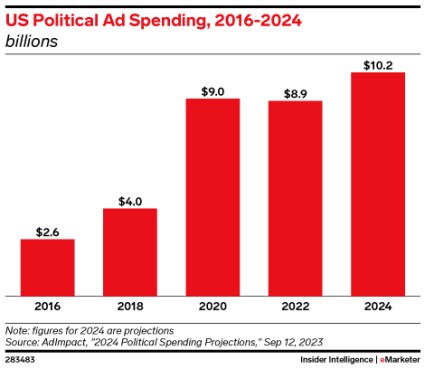
Source: eMarketer
You should keep in mind that prices will also vary from state to state. States with Senate races and those that are battlegrounds for the Presidential race will see more ad investment than states with more localized elections. Spending up in more accessible markets might be a prudent move to keep costs manageable.
As you’re planning for 2024, you also need to keep a finger on the pulse when it comes to your customers. Trendspotting tools like Google Trends and social listening will be especially important since these tools can help you find what consumers are talking about in real time. You should also be monitoring forums like Reddit, where your online audience may gather to share opinions. If your ads are appearing next to content your audience finds offensive or your lack of a statement on a social issue is making a subsegment of your customers angry, it’s better to know sooner than later so you can address the issue.
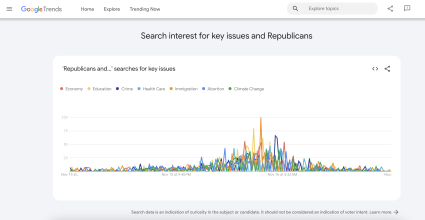
Source: Google Trends
An election year is a challenging time for advertisers of any stripe. Above all else, you need to be prepared for the worst and keep testing new ideas to see what works.
We generally recommend reserving around 20% of your budget for testing and innovation. In an election year, plan to reserve another 5% for unexpected developments that can come up during an intense political moment. That 5% will ensure you’re ready to deploy innovative tactics to deal with disruption, set your brand up for a successful PR moment, or get ready for anything else that this election cycle brings your way.







Responses